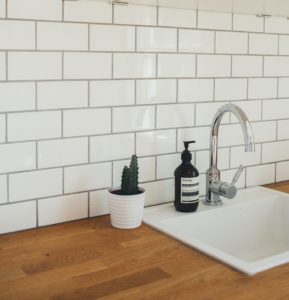Spring is here and so are pests! With the promise of warmer weather, lots of pests are coming out of their winter homes in search of a place to make a new nest. Gregory Pest Solutions wants to make sure the place they choose for their new home isn’t in your home. Read more to find out what makes your home so attractive to pests and what you can do to make it as unfriendly to pests as possible!
Easy entry
Every home undergoes wear and tear. This creates cracks and holes in siding, along the foundation, and in window screens. Pests take advantage of these openings and help themselves to the shelter your home provides. Sealing those cracks and holes with caulk or steel wool and repairing or replacing window screens will go a long way toward prevention.

Another way pests get into your home is through branches that hang over your roof or through shrubs and bushes that are flush to the side of your home. Insects and wildlife use these branches as highways to gain access to your home. Keeping plants cut back from your roof and side of the residence is another way to prevent pest entry.
Moisture
Every creature needs water, and pests are no different. Did you know cockroaches can survive for a whole month without food but can only survive for one week without water?

Pest proofing a home is all about habitat modification. This means we want to make your home as unfriendly to pests as possible. By fixing leaky pipes and faucets, you’re taking away a very important part of survival for a pest. But don’t stop there. Damp crawlspaces and basements are also a great place for pests, especially termites and cockroaches. Keep those underground places dry and well ventilated to help prevent pests!
Food sources
Different pests eat different things. Moth larvae eat through your clothes and cockroaches eat everything! To keep all sorts of pests at bay, store clothes in plastic containers if they’re in the attic. Food should also be stored in plastic containers to ward off rodents and pantry pests, and keeping floors and counters clear of old food and crumbs is a must! It’s easier to see pest activity in cleaner environments.

You could also opt for glass containers instead of plastic. However, if you do use a plastic container, a heavy duty plastic is best. If determined enough, a hungry rodent can chew through tupperware. Thicker plastic and glass containers are the best option in this case.
Shelter
In the pest industry, locations where pests seek shelter are called “harborage.” To cut down on harborage points, keep your yard free of leaves, grass clippings and dead branches. You should also keep shrubbery in check by pruning and keeping the limbs cut back from the home.

Inside your home, keep trash and clutter to a minimum. Pests use things laying on the ground as shelter to hide from predators, i.e. you. By keeping the inside and outside of your home clutter free, you take away shelter that pests need to survive. When there is no shelter, the insects and wildlife realize it is not a suitable living environment which will help keep them away.
I modified the habitat, but the pests are still here!
If you’re having a difficult time narrowing down the areas of your home that pests are attracted to, call a licensed pest management company to help you figure out what the pests are loving so much. You can also check out Smarterpestcontrol.com/blog for other pest prevention tips and facts!

